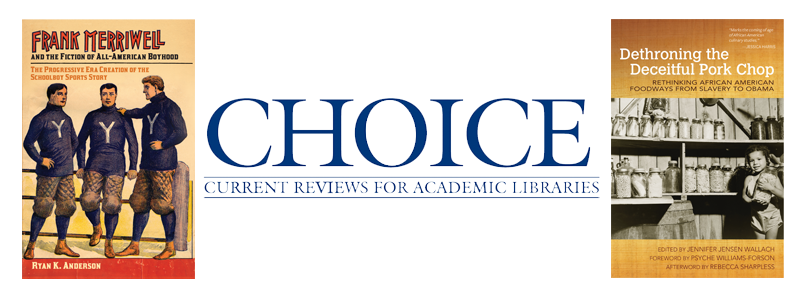Frank Merriwell and the Fiction of All-American Boyhood
The Progressive Era Creation of the Schoolboy Sports Story
Ryan K. Anderson
Anderson (history/American studies, Univ. of North Carolina, Pembroke) presents a biographical treatment of Gilbert Patten (1866–1945), who employed the pseudonym Burt L. Standish for his Frank Merriwell series. The ambitious author, who first became renowned during the Gilded Age and flourished during the Progressive Era, crafted formulaic representations of the all-American boy. His seemingly average protagonist was hardly that, as he moved from boyhood to adulthood while excelling in sports, the classroom, romantic endeavors, and life altogether. Delivered in serialized fashion, the tale of Frank Merriwell initially appeared in Tip Top Weekly, a Street & Smith publication that appeared from 1896–1912. Anderson argues that the fictional Merriwell recast American boyhood and at the same time popularized the schoolboy sports tale. He stood for an appropriately “manly” figure, excelling in competition, hard work, fair play, and acceptance of authority. Anderson concludes on a more negative note, suggesting that the Merriwell image interferes with contemporary Americans’ understanding of themselves today. A welcome addition to the literature on popular culture.
–R. C. Cottrell, California State University, Chico
Summing Up: Recommended. All readers.
Dethroning the Deceitful Pork Chop
Rethinking African American Foodways from Slavery to Obama
Edited by Jennifer Jensen Wallach
Foreword by Psyche Williams-Forson
Afterword by Rebecca Sharpless
Food is not an afterthought but central to the story of race in the US, and this volume demonstrates a myriad of approaches to studying these complex relations. Timely and illuminating, these essays set a new standard for food studies, not just the study of African American foodways. With forceful confidence, authors have brought forth histories buried in archives, cookbooks, and library shelves. They turn accepted truths on their heads by revealing complexities and contradictions, using an array of methodologies. The title chapter, written by editor Wallach, examines the role of food at Tuskegee Institute as a cultural, political, and economic strategy to advance “racial progress.” Another chapter focuses on the intersections of soul food and “magic and occult.” Each tells a story or analyzes how power, gender, class, and race intersect in, at, and through food. The authors give voice to generations of women and men whose foodways were rendered invisible by caricatures (Mammy, Aunt Jemima, watermelon, and fried chicken), and whose agency through food (assimilation, protest, poison) was ignored in the face of dominant (read white) narratives and histories. Every chapter tells a story that sheds light on convention while underscoring the centrality of food in the production and reproduction of race, identity, and nation. An exciting read.
–A. B. Audant, CUNY Kingsborough Community College
Summing Up: Essential. All academic levels/libraries.

